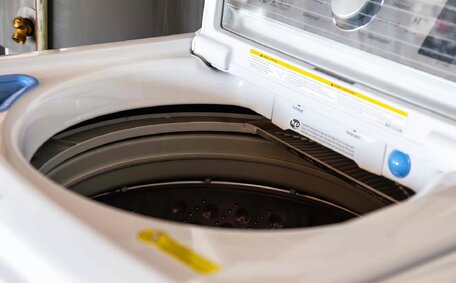Introduction to Natural Gas and Propane
The differences between natural gas and propane are crucial in powering homes and businesses, given their prevalence and versatility. As leading experts in gas fitting and plumbing services in Pennant Hills, Sydney, we often get asked - What sets propane apart from natural gas in their roles as popular fuels?
In this article, we’ll compare and contrast propane and natural gas, looking at key factors like energy efficiency, cost, environmental impact, and safety. We’ll also explore the practical differences when it comes to storage, delivery and usage in households and businesses.
By the conclusion, you’ll be well-equipped to determine which fuel type is ideal for your home.
You’ll learn the advantages and disadvantages of using natural gas and propane for fueling appliances, equipment, and vehicles.
Let’s explore the similarities and differences between these high-energy, clean-burning fuels.
Composition and Origins
When we look at the chemical composition of natural gas and propane, some key differences emerge.
Natural gas is primarily composed of methane, typically making up 70-90% of natural gas reserves. Methane is a natural byproduct of the decay of organic matter and is often extracted from natural gas fields or reservoirs deep underground.
Propane, however, does not occur in isolation and is not natural in its composition. It is produced as a by-product during the refining of natural gas and crude oil. Chemically speaking, propane is a three-carbon alkane gas (C3H8).
This means propane supply is dependent on natural gas and petroleum production.
Australian households typically receive locally-sourced CNG, distributed through pipelines. Propane however, is either imported or domestically produced during petroleum refining.
Understanding these origins helps explain why natural gas is typically cheaper and more widely available in Australia, especially in urban areas like Pennant Hills connected to the gas grid. Propane requires more processing and transportation to get to consumers.
Energy Content and Efficiency
Propane, delivering over double the energy per unit volume compared to natural gas, enables appliances and equipment to operate with greater energy efficiency.
To produce the same amount of energy you’d get from a 5 kg propane cylinder, you’d need approximately 11 cubic metres of natural gas.
The significant energy density of propane enhances its efficiency for activities such as cooking, water heating, and operating appliances and generators. Propane enables longer usage times from a single tank than an equal volume of natural gas.
Natural gas, by contrast, is directly transported via pipelines to homes and businesses. This avoids the hassle of manually refilling and replacing propane tanks, which can offset some of propanes efficiency advantages in real-world applications.
Cost Comparison
Upfront Costs
When it comes to upfront installation costs, natural gas often works out cheaper than propane. To get natural gas, you usually just need to pay connection and metering fees to tap into existing gas lines. This often costs a few hundred dollars at most.
Propane installation requires large on-site storage tanks, which can exceed $1,500 in cost. There are also plumbing and permitting costs to connect appliances to the propane tanks.
Long-Term Costs
Over time, natural gas also is generally less expensive than alternatives, making it a more affordable option for the average homeowner. 2021 Australian Energy Statistics report the average household gas price as roughly 8 cents per megajoule for natural gas, compared to 24 cents for propane.
Given its higher energy density, propane can ultimately provide more energy for the same price. But natural gas delivery through existing pipelines keeps ongoing costs lower for most households.
For larger scale commercial and industrial applications, propane’s efficiency advantages can provide long-term cost savings that offset the higher upfront expenses of installing large propane tank infrastructure.
Environmental Impact
When considering environmental impacts, propane has some advantages over natural gas.
Propane is considered the cleanest-burning fossil fuel. It produces negligible amounts of greenhouse gases and other pollutants before and after combustion. This makes it a lower-emission fuel choice compared to many alternatives.
Natural gas, though cleaner than coal or oil, has a greater climate impact than propane due to its nonrenewable nature and the potential for leaks during production, transportation, and use.
However, natural gas delivery through existing pipelines has less of an environmental footprint compared to propane which needs to be trucked in bottles or tanks to consumers. This leads to extra transportation emissions.
Households in urban areas like Sydney using natural gas typically face lower environmental impacts than rural homes reliant on propane delivery. Urban natural gas supply avoids most transportation emissions.
But for off-grid households or businesses, propane’s clean-burning properties can make it the more eco-friendly choice despite the delivery required. The low emissions during actual use offset the transportation component.
In summary, propane burns cleaner, but natural gas’ pipeline delivery system reduces real-world emissions for grid-connected homes and businesses. For off-grid users, propane is likely the better environmental option.
Delivery and Storage
When it comes to delivery and storage, there are some key differences between natural gas and propane.
A comprehensive network of pipelines directly supplies natural gas to homes and businesses, eliminating the need for on-site storage. It requires no on-site storage. Conversely, propane must be stored in pressurised tanks and requires truck delivery.
Typically, several 45-100 pound tanks are installed on-site and refilled by a propane company as needed.
You simply access gas on demand from the distribution grid. However, propane requires bulk storage in large pressurised cylinders or tanks.
The benefit of propane tanks is they can be used in rural areas or locations without existing natural gas pipeline infrastructure. Propane delivery allows off-grid access to this high-energy fuel.
However, propane storage has downsides, including occupying outdoor space and the need for regular maintenance. Tanks take up outdoor space, while refilling and maintenance must be scheduled regularly. Natural gas delivery is more seamless and convenient for on-grid homes.
Safety is also a consideration with propane storage tanks. Proper installation, ventilation, maintenance and leak monitoring is required. But modern propane tanks are engineered to stringent safety standards.
In summary, the pipeline distribution network makes natural gas delivery and storage much simpler for connected households and businesses. But propane’s pressurised storage and transportability suits rural or off-grid applications where pipeline access isn’t available.
Household and Business Uses
For heating and cooking in households, natural gas is commonly used to fuel stovetops, ovens, and outdoor grills due to its continuous supply. The continuous piped supply makes it convenient for fueling major appliances. Propane’s portability allows it to power appliances and generators in off-grid locations through small portable tanks.
For home heating, natural gas is often the lower cost option where pipeline infrastructure exists. However, propane heating can make sense for rural households beyond the gas grid. Propane fireplaces, furnaces, and heaters provide an efficient heating solution.
In commercial settings, propane’s high energy density and portability allow it to power forklifts, generators, and other equipment. Propane-fueled vehicles are also common in commercial fleets. Meanwhile, natural gas can provide large-scale heating and cooking in facilities connected to pipelines.
In plumbing, particularly in areas around Sydney without grid connections, propane tanks are useful for soldering and brazing tasks. However, natural gas is often preferred for heating water and powering appliances where pipeline access allows.
When selecting between natural gas versus propane, Households and businesses must weigh upfront costs, efficiency, environmental considerations, existing infrastructure, and safety when choosing a fuel. Propane suits off-grid flexibility, while natural gas provides convenience where pipelines allow. Each fuel has advantages depending on application.






